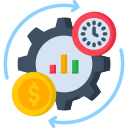
Maximizing Efficiency: The Role of AI in Automation
Welcome to our deep dive into the chosen theme, Maximizing Efficiency: The Role of AI in Automation. Explore practical playbooks, candid stories, and research-backed tactics that turn busywork into measurable gains. Join the conversation, share your wins, and subscribe for ongoing insights.
Why Efficiency Demands AI Now
In one mid-sized warehouse, orders spiked while staffing plateaued. An AI scheduler paired with robotic pick paths cut idle time by a third, turning morning backlogs into afternoon breathing room. Tell us your worst bottleneck, and we will unpack it together.
Process First, Then Models

Find the friction with honest maps
Start with a whiteboard and walk the journey end to end. A finance team discovered four approvals for routine expenses, each added after past mistakes. Streamlining those steps made the later AI policy engine dramatically simpler and safer.

Measure what matters before automation
Define a handful of metrics that tell the truth about efficiency, such as queue age, rework rate, and time to resolution. Baselines clarify impact and prevent wishful thinking. Share your top three metrics, and we will suggest complementary ones.

Include frontline voices early
People who live the process know the shortcuts and pain points. Involving them reveals hidden dependencies and avoids automating around critical human context. Invite a frontline colleague to review your plan, then report back with insights you had missed.
Selecting AI Tools That Fit
Audit where data originates, how clean it is, and who owns it. A logistics firm discovered duplicate location codes inflating travel time predictions. Fixing the data beat any algorithm upgrade. Start with quality; models will thank you later.

Stories From The Field
Manufacturing line that learned to breathe
A plant was drowning in micro-stoppages. Vision AI flagged minor misalignments, while automation paused upstream stations for seconds rather than minutes. Downtime fell noticeably, and operators finally trusted the rhythm. What micro-stoppage could similar intelligence ease in your environment?

Bias is a risk, not a headline
Data reflects human history, including inequities. Regular bias tests, diverse review panels, and clear appeal paths protect both people and outcomes. Treat fairness like uptime: tracked, owned, and improved. Comment with the bias check you plan to implement first.
Explainability people can use
Stakeholders need clear reasons, not math lectures. Provide concise rationale, highlight key factors, and show confidence ranges. In one rollout, explanation cards defused resistance by making decisions discussable rather than mysterious. How might you make decisions legible to your team?
Resilience when systems fail
Automation should degrade gracefully. Circuit breakers, human-in-the-loop overrides, and fallbacks keep operations safe. A retailer rehearsed failure drills quarterly and recovered in minutes during a real outage. Share your continuity plan and learn from peers refining theirs.
Your 90-Day Efficiency Sprint
Clarify objectives, map workflows, and collect baseline metrics. Interview frontline staff and stakeholders to surface constraints and success criteria. Commit to one high-impact, low-scope target so the sprint feels achievable and demonstrably tied to efficiency outcomes.


Your 90-Day Efficiency Sprint
Build a thin vertical slice that automates a small but painful step. Instrument everything, and run A and B comparisons against the baseline. Share early results widely to recruit champions and sharpen expectations before committing to broader rollout.
